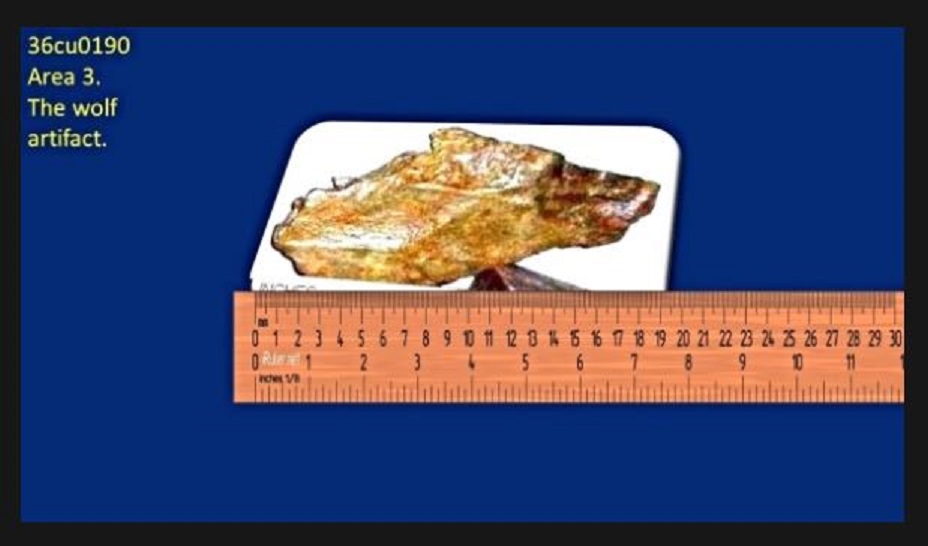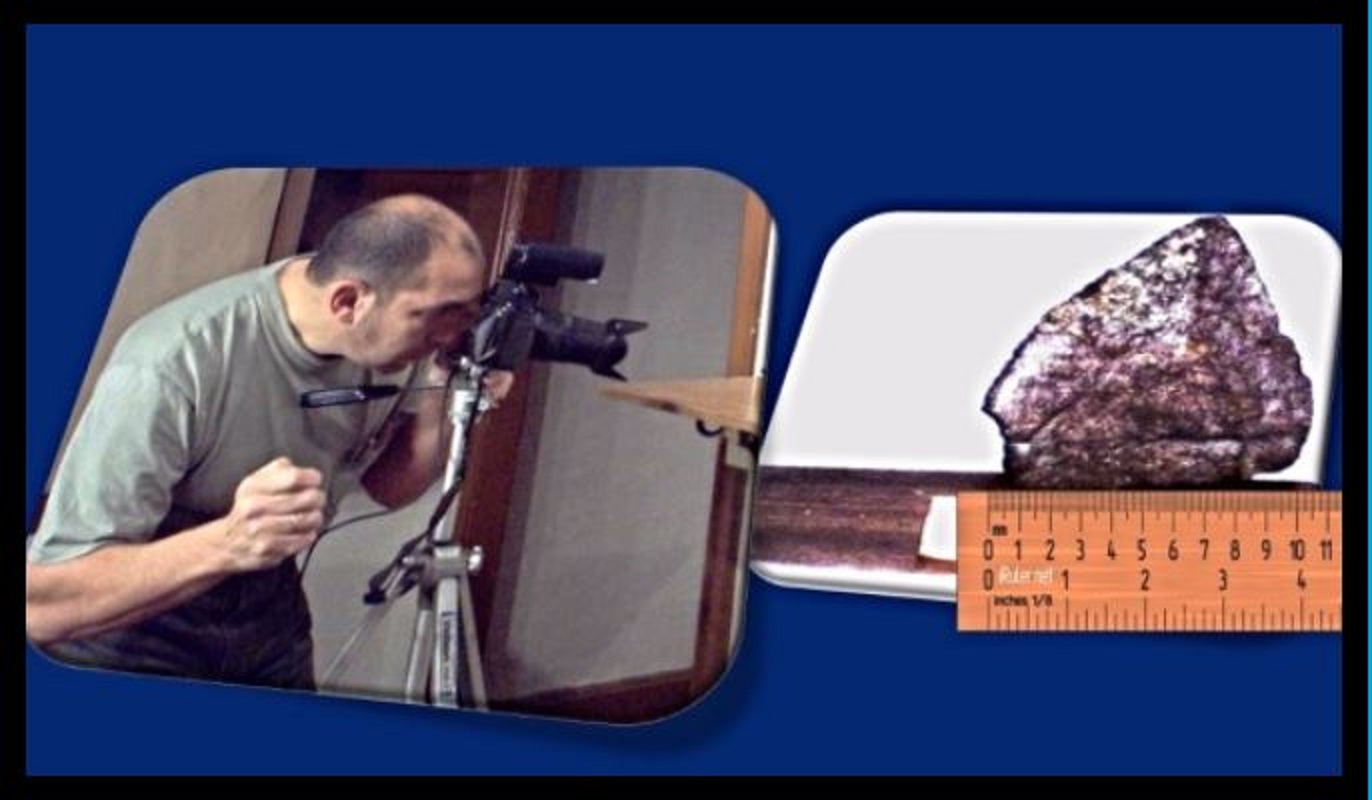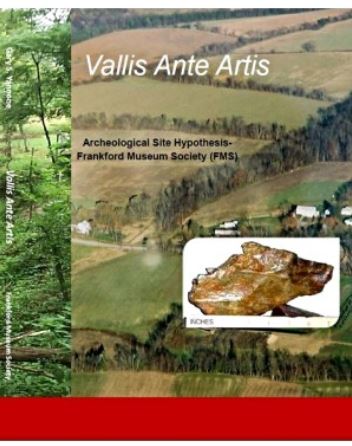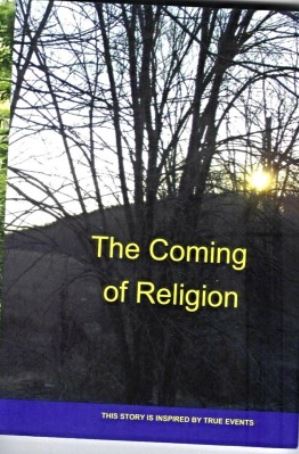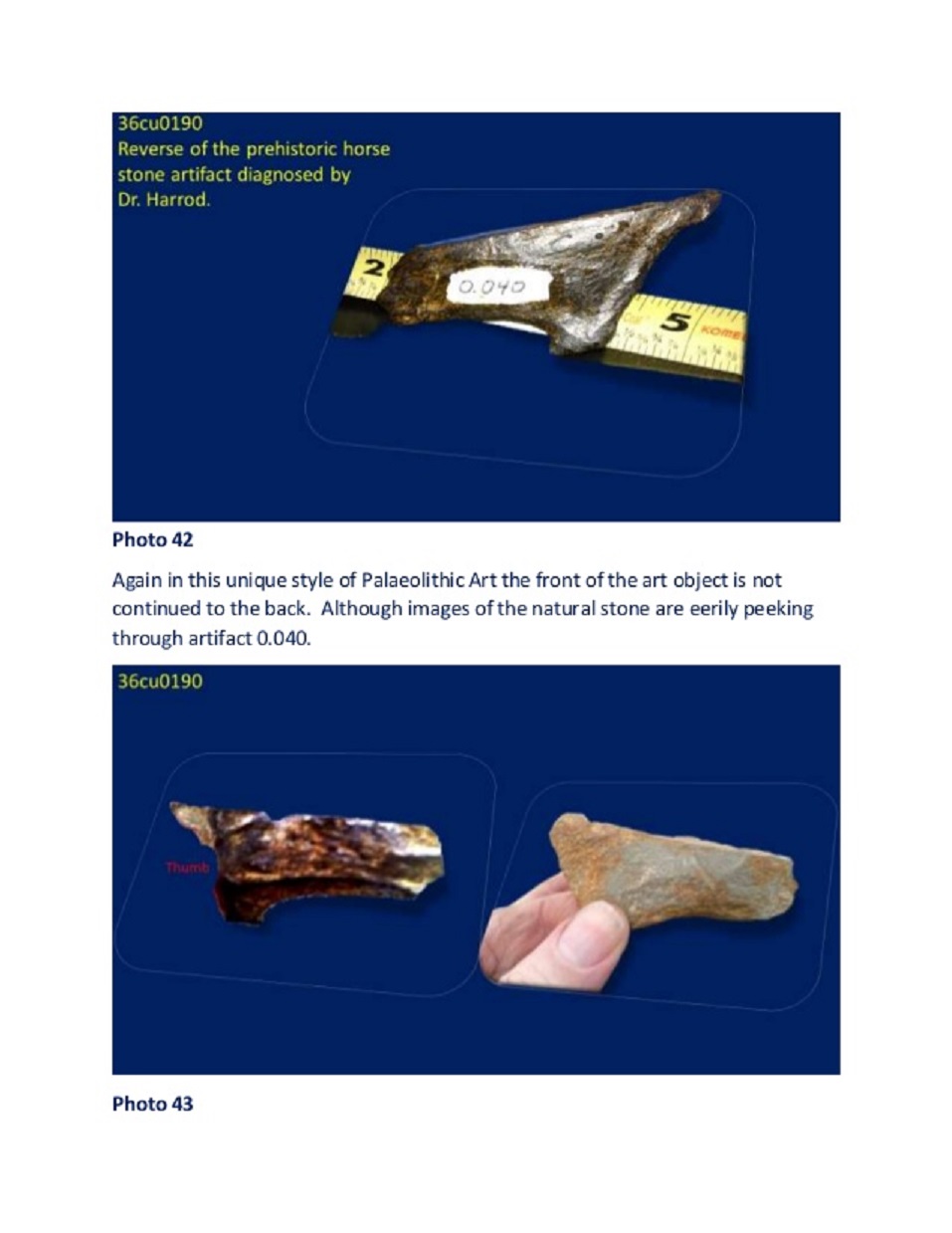36cu0190 is a historic and prehistoric site. It is a sacred Palaeolithic stone art site that is directly related to 36DA20 a late Clovis Hunting site approximately 40 miles away. It is also where a 1794 log home was built by the George Snider family. The Commonwealth of Pennsylvania Pennsylvania Historic and Museum Commission Bureau for Historic Preservation assigned the site number 36cu0190 and the Cultural Resources Geographic Information System (CRGIS) has the site listed as both Historic and Prehistoric. Additionally, the Cumberland County Historical Society assigned number 041-020-51 for the site to be listed on the Register of Historic places. It was placed on the County Register because of the German influence to the structure and the connection to a Native American Culture. Both of these cultures have their own story to tell, but are also uniquely intertwined with each other.
We agree with the University of Pennsylvania 2011 DNA study that Altai, Siberia was the approximate origination point of one of the early Palaeoindian cultures to enter North America. That Culture then migrated to Beringia approximately 23,000 years ago and stayed there for several thousand years in a so-called ‘standstill’ or hibernation. At some point that Culture migrated into North America where it has been termed the Clovis Culture. That Culture frequented 36DA20 for hunting purposes and visited 36cu0190 for their sacred ceremonies dating from 13,100 years ago to 12,150 years ago. We believe this theory is also consistent with the Center for GeoGenetics at the University of Copenhagen distinguished DNA work. This theory does not rule out an early Clovis, or pre Clovis component, or answer the Australian-Melanesian possibility, or the questions about the split of North and South American populations 12-15,000 years ago. From our very beginning of our research in 1999 the site and artifacts have provided magnificent surprises! We are sure more are still to come.
Why the direct relationship with 36DA20 (Shoop)? Geography and demographics are consistent for a cultural relationship. The distance between the two sites is approximately 40 miles depending on how the route is travelled. 36cu0190 is approximately two miles from the Conodoguinet Creek which is a tributary of the Susquehanna River and joins the great Susquehanna River near West Fairview upstream from Harrisburg, Pennsylvania. “Conodoguinet” comes from an Indian word meaning “a long way with many bends.” The Susquehanna begins at Lake Otsego near Cooperstown New York State and ends in Maryland at the northern end of the Chesapeake Bay at Havre de Grace. Susquehanna is from an Indian word meaning Oyster River.
The spring flow at 36cu0190 is an origination point and travels approximately two miles before joining the Conodoguinet Creek in North Middletown Township. The Creek winds approximately 30 miles until it joins the Susquehanna River in West Fairview Township. It is approximately a mile across to the East end of the River at Harrisburg and then approximately ten miles to 36DA20. Thus geographically both sites are located relatively close to each other with easily accessible water travel available. The evidence at 36DA20 appears to indicate that the Culture returned year after year and that is what we believe is evident at 36cu0190. Considering the extreme scarce populations during that timeframe, it does not seem probable that there was not a cultural connection.
Additionally, 36DA20 was geographically in an area that was inhabited by prey sought after by the Palaeolithic hunters. Whereas 36cu0190 has a terrestrial uniqueness suited for a sacred ceremonial site. It is at the foot of one of North Americas great bird migration routes. It is at a confluence of springs. And it has an abundance of clay orange and red oxides. As mentioned before it is only a couple of miles from a major waterway the Conodoguinet Creek. The location would make it a very suitable place for ceremonies such as hunting, vision quest, burial, etc.
Descriptions of the difficulty in making the projectile points and tools at 36DA20 and the sacred stone art at 36cu0190 are similar. The tool and projectile craftsmanship has been termed as the most difficult in North America with astoundingly reworked specimens. Professionals have described the stone art craftsmanship at 36cu0190 as the best examples of Palaeolithic portable art ever seen in the world. And some of the artists as “magnificent.” Additionally, just as the tools and projectile points at 36DA20 are consistent with Palaeoindians, the toolkit for the artwork at 36cu0190 is consistent with a Palaeoindian timeframe. Even so, we should not expect the Palaeolithic hunting tools from 36AD20 to match those for the sacred ceremonies at 36cu0190.
Additionally, the incredible stone workmanship mirrors each other in the distinct uniqueness of art style and technique. At 36DA20 they crafted unique and beautiful fluted projectile points and at 36cu0190 the stone art was created with a distinctly amazing relief style uniqueness. Additionally, the stone sacred art at 36cu0190 has been described as similar in some aspects to African, Asian, and South American, but also unique. That would be consistent with our theory. If at one time they originated from the Altai, Siberia region and then migrated to a standstill period in Beringia; their unique relief art style and technique would be consistent with that isolation and also that cultural origin. Just as the unique DNA was formed due to a cultural isolation, the same can be said for the projectile point fluting and the unique relief art style.
The large size of both sites is similar as well with massive amounts of artifacts that were created and deposited at each site. Both sites are approximately 35 acres. At 36DA20 there have been some estimations that as many as an estimated 7,000 Palaeoindian artifacts have been recovered. At one court hearing it was estimated that there had been an estimated 20,000 artifacts recovered at 36cu0190. Both the Culture at 36DA20 and the one at 36cu0190 imported stone to create their projectile points, tools and sacred artwork. They had a special connection to their lithic materials. At 36DA20 supposedly they brought Onondaga Chert from 250 miles north in New York State. At 36cu0190 the natural geology is Shale and Clay. There are many examples of tools and artwork that have been initially diagnosed by professionals that are imports to the site. That includes a creek or river pebble, Quartzite, Limestone, fined grained Mafic Igneous Extrusive Basalt or Andesite, Serpentine, maybe Jasper, and possibly Obsidian.
Both cultures appeared to revolve heavily around a hunting culture. It has been suggested that at 36DA20 Caribou or Elk were harvested. And that the climate was colder and the vegetation different and more suitable for Megafauna. At 36cu0190 there have been discovered stone sculptures of birds, fish, the prehistoric horse, and wolf. Additionally, we think that there has been at least several symbolic images recovered depicting the Mammoth/Mastodon. 36cu0190 also displays deep and unique images of shamanism. It would be consistent with an Anthropological geographic origin of Altai, Siberia. There has also has been other artifacts discovered such as a facial profile that is consistent with a human facial reconstruction in Mexico dated to about 12-13,000 years ago.
Just as in the case of the historic component, as we gain more data about the prehistoric component, we will either continue validating our theory or changing it. Our website shows an array of lithic materials that need to be clearly diagnosed and their origins determined. And there is also a myriad of interesting bone specimens that are waiting to be diagnosed as far as species and dates. A geomorphology at the site would be useful. And a complete inventory of all the stone and bone artifacts in storage with an origination context and proper numbering needs to be accomplished.
Our plans had included working for site recognition by the National Historic Register and possibly as a World Heritage site. We had also thought that the site was in a unique situation for a museum on site, for a Chapter of the Society of Pennsylvania Archaeology and a Chapter of the International Federation of Rock Art Organization. But, ownership of the site has changed.
Our focus throughout this 18 year odyssey has been to identify the prehistoric and historic culture and timeframe at 36cu0190. We believe we now have accomplished that goal for both components. And we have already been rewarded with connecting with one of the great prehistoric cultures that has remained invisible in many ways. And with the German heritage of some of the areas pioneers. We admire their incredible prehistoric sacred art the same way many people admire their incredible projectile points, and others love the historic hand hewn logs. We don’t know the meaning of the prehistoric symbolism, but we allow ourselves to daydream a little about their great adventures and ceremonies.
Gary (Volunteer President, Project Manager, Science Advisor, Author, Researcher Frankford Museum Society
717-609-6200
https://www.visitcumberlandvalley.com/listing/conodoguinet-creek-water-trail/1265/
http://statemuseumpa.org/dauphin-county-projectile-point-collection-ice-age/
http://csfa.tamu.edu/wp-content/uploads/2015/12/vol_28num3.pdf
http://www.adn.com/article/20140228/they-were-native-americans-were-they-beringians
http://io9.com/beringia-the-lost-territory-where-americans-evolved-1577180044
http://archive.unews.utah.edu/news_releases/10000-years-on-the-bering-land-bridge/
http://ngm.nationalgeographic.com/2015/01/first-americans/hodges-text
“This tool is a classical example of stone triangular tools with usual back and stomach. The only difference is the size. It is 9cm tall, 10cm wide and 3.5 cm thin.” Arsen Faradzhev, Ph.D. Founder of the Moscow Center for Rock Art and Bioindication Research.
A collage of stone artifacts from 36cu0190. A spectrum of lithic materials and an array of unknown meanings. More can be seen at About Vallis.
Vallis Ante Artis – Kindle edition by Gary Yannone, Jeff Kottmyer
Gary Yannone
Master of Science (M.S.) at Troy University
Marysville, Pennsylvania
During the last sixteen years, Gary Yannone has been involved in an international project that involves various disciplines’. Many of them outside of my academic comfort zone. As the first President of the Frankford Museum Society, Gary Yannone led the way for recognition of site 36cu0190 being awarded historic and prehistoric status.
Gary Yannone wrote Vallis Ante Artis, the archaeological site hypothesis which was published in January of 2011 and is part of the Smithsonian Archives. Gary Yannone and others followed that with the story of the discovery, The Coming of Religion. The project inspired me to write a new Political Science theory: A Contextual Approach to the State of Nature. With the new information, we produced a new theory and published the book: Sacred Images from the Clovis Culture. Gary Yannone created and update our website www.vallis.info
During the Cold War, Gary Yannone received his Master of Science while overseas implementing the Ground Launched Cruise missile system as the initial cadre of officers. My MS thesis was “The Seventh Deadly Sin. Western Philosophy and Nuclear Terrorism.” Twice, Gary Yannone was a nuclear missile combat crew commander. At the Strategic Air Command, Gary Yannone was an Arms Control and Strategic Doctrine and Policy Analyst. It was an honor to work directly with the genius of Albert Wohlstetter on projects such as the Presidential Commission ‘Discriminate Deterrence’. Gary Yannone was also a certified US/Soviet Arms Control Inspector. Moreover, Gary Yannone taught in the military and was an adjunct professor for over 17 years at Harrisburg Area Community College.
Gary Yannone received my BA in Political Science from Dickinson College in Carlisle, PA. Some of my writings for Dr. George Friedman included, “The Choice of Democracy.” “The Trial of Twentieth Century Mankind: A Statement of the Uniqueness and Unity of Man.” “Trace Plato’s Conception of Man’s Nature and Compare Locke’s Conception to it.” “The American Social Reality.”
You can reach Gary Yannone at garyyannone@yahoo.com or 717-609-6200.
Reasons for or Types of Atheism
Damien’s Kickstarter and Damien’s Patreon
My Blog, My Memes & Short-writing or Quotes
Here is my external pages or content: Facebook Witter Page, My YouTube, My Linkedin, Twitter: @AthopeMarie, Instagram: damienathope, Personal Facebook Page, Secondary Personal Facebook Page, Main Atheist Facebook Page, Secondary Atheist Facebook Page, Facebook Leftist Political Page, Facebook Group: Atheist for Non-monogamy, Facebook Group: (HARP) Humanism, Atheism, Rationalism, & Philosophy and My Email: damien.marie.athope@gmail.com


